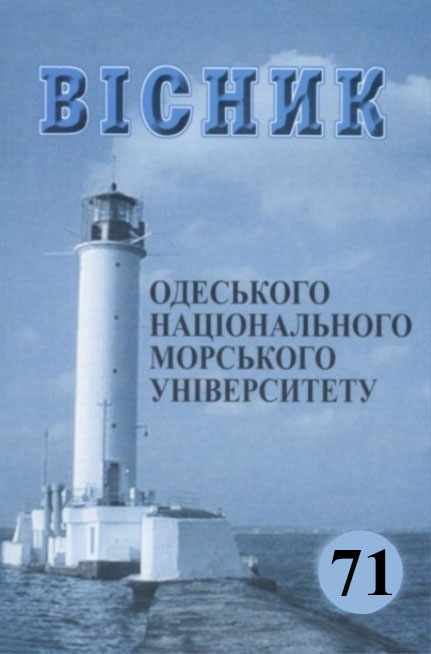Influence of the geometric parameters of the electric vessel’s hull on inertial characteristics
Main Article Content
Abstract
A method of estimating inertial characteristics was proposed. The need to take into account the operating parameters of the propelling electric power plant when calculating these characteristics was substantiated. Calculations of inertial characteris- tics are based on the analysis of transient modes of electric vessels’ propulsive complexes during the corresponding maneuvers. The main indicators of the control signals were established, which provide the necessary parameters without exceeding the overloading capabilities of the propelling plant. The parameters affecting these characteristics were identified. A degree of influence was estimated. The effect of the geometric parameters of the ships’ hull on the main indicators of the ship’s acceleration and braking was evaluated. A comparative analysis of the influence of the vessel's hull length during its acceleration and active braking was carried out. The behavior of vessels with different hull lengths was illustrated by the simulation results of the corresponding maneuvers. The results of the comparative analysis showed that with an increase in the length of the vessel by 10 %, the parameters characterizing the inertia of electric vessels deteriorate by approximately the same amount, remaining within the limits regulated by the Register.
Article Details
References
2. Teresa Abramowicz-Gerigk, Miroslaw K. Gerigk. (2020) Experimental study on the selected aspects of bow thruster generated flow field at ship zero-speed conditions. Ocean Engineering, vol. 209(92):107463. DOI: 10.1016/j.oceaneng.2020.107463.
3. Kupraty O. Mathematical modelling of construction of ship turning trajectory using autonomous bow thruster work and research of bow thruster control specifics. Scientific Journal of Gdynia Maritime University, No. 118, June 2021, pp. 7-23. DOI: 10.26408/118.01.
4. Yarovenko V.A. (1999) Raschet i optimizatsiya perekhodnykh rezhimov propul'sivnykh kompleksov elektrokhodov. [Calculation and optimization of transient modes of propulsion complexes of electric ships] ‒ Odesa: Mayak, (in Ukraine).
5. Yarovenko V.A. (2017) Metod rascheta perekhodnykh rezhimov grebnykh elektroenergeticheskikh ustanovok elektrokhodov [Method for calculating transient modes of propulsion electric power plants of electric ships] / V.A. Yarovenko, P.C. Chernikov // Yelektrotekhníka í yelektromekhaníka. – № 6. Р. 32-41. DOI: 10.20998/2074-272X.2017.6.05
